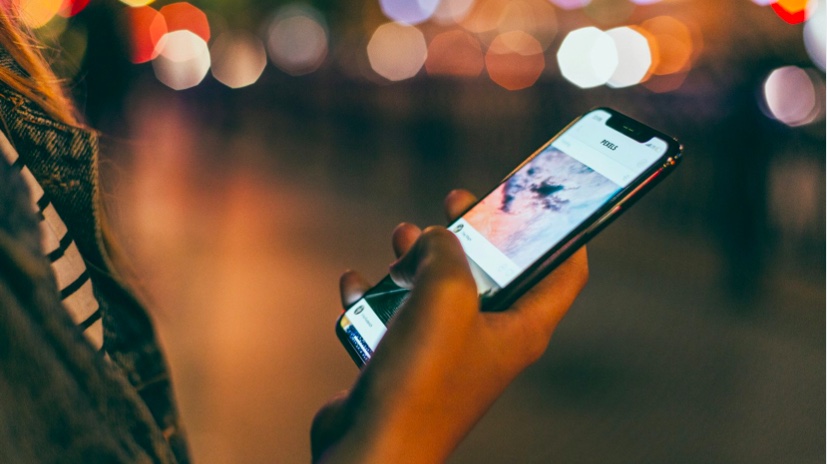
The increasing popularity of influencer marketing has given rise to a major issue for brands and marketers, “influencer fraud”.
Today, over 30% of conversions result after seeking opinions of the popular influencers in the respective industry. Users often prefer searching for videos or blogs of influential figures before deciding to purchase.
This has made influencer marketing one of the most preferred paid marketing channels by B2B and B2C marketers. Over 80% of marketers say the revenue generated from influencer marketing is similar or often more than other paid marketing channels.
However, even influencer marketing has its fair share of shortcomings. The growing demand for influencers has led to the rise of influencer fraud. In 2019 alone, it was the main reason for losses of a whopping 1.3 billion dollars.
What is influencer fraud?
 To understand what influencer fraud is, you must first grasp what fake influencers are and how they operate. You must realize the characteristics that separate them from genuine influencers.
To understand what influencer fraud is, you must first grasp what fake influencers are and how they operate. You must realize the characteristics that separate them from genuine influencers.
Fake influencers are social media users who seem to be genuine influencers by all accounts. They post original content on their social media profiles as all social media influencers do. However, the differentiating factor that separates them from genuine influencers is the bought fake followers.
Every social media influencer has some fake followers in their follower base. There is no way to avoid fake followers other than auditing your social profiles and blocking fake accounts at regular time intervals. Although, when a majority of followers of an influencer are fake, it’s best to avoid such social media profiles when it comes to influencer marketing.
Fake influencers purchase fake followers to inflate their follower count. A high follower count creates the illusion of popularity on social media. This helps them attract more followers to their social profiles.
However, when real followers find no quality content, they eventually unfollow the account. Many wannabe influencers even go so far as buying fake engagement from fake accounts to seem genuine. This helps these users attract sponsorship deals from major brands and commit influencer fraud.
Why is influencer fraud a major concern in influencer marketing?

Before we discuss why influencer fraud is a major concern, let’s look at some numbers and understand the current state of influencer marketing.
In 2020, over thirty percent of B2B marketers have already increased their influencer marketing budget.
In 2019, brands invested over $8.5 billion on influencers, and that number is estimated to go as far as $10 billion in 2020.
With such huge budgets, it’s no wonder that everyone wants a piece of it. In 2019, brands and B2B marketers lost over $1.3 billion due to fake influencers. The number is estimated to increase by up to $1.5 billion in 2020.
Influencer fraud is a major concern for B2B marketers and due to its impact on the businesses’ financials. Major brands might be able to recover from influencer fraud, but a small business venture might not be so fortunate.
Collaborating with popular influencers for maximum exposure can cost hefty amounts. But, if the influencer is fake, the hefty sponsorship deals won’t provide any increase in exposure or conversion rates.
Apart from financial losses, influencer fraud also leads to a colossal waste of valuable resources. Businesses have to dedicate a lot of valuable resources to ensure the success of influencer marketing campaigns. But if the influencer is fake, there is a substantial waste of time, resources, and money. This can cause major setbacks for any business big or small.
Influencer Fraud: Fake Purchases
This is a new way influencers have found to fake purchases once they have secured an influencer marketing deal with a brand. Because of the increasing numbers of fake followers, brands have moved to pay influencers based on each purchase rather than a flat fee. The brands provide influencers a promo code to track purchases influenced by them.
Although, fake influencers have found a new way to overcome this scenario as well. They take advantage of coupon browser extensions like Honey, Shopper and Wikibuy.
Coupon extensions are now more popular among e-commerce shoppers. For the consumers, it is a great way to find good deals on products they want to purchase. Fake influencers upload their coupons codes on these extensions to boost sales. However, for brands, it is a major concern as it cuts from their revenue.
How to detect influencer fraud?
Now that you are aware of the impact that influencer fraud can have on your business, let’s dive into the ways you can protect yourself from fake influencers.
Analyze follower-to-engagement ratio
Buying fake followers does boost your follower count but it negatively impacts your engagement statistics. Fake followers and bots rarely engage with any social media profile they follow. Since most of the followers of fake influencers are bots, they have very low engagement statistics. You can leverage this to identify fake influencers. Simply compare the engagement rate of these accounts with their total follower count. Very low engagement despite having a high follower count usually means that is the influencer is fake. Analyze the follower and engagement ratio to detect influencer fraud.
Analyze audience quality
Audience quality is also a useful metric that can help you identify influencer fraud. Fake followers rarely engage with any of the accounts they follow. You can analyze the engagement statistics of the followers of influencers. If the engagement quality of the influencer is low despite having a high follower count, the influencer has most probably bought fake followers.
Analyze social media engagement quality
Analyzing engagement quality is another great way of identifying influencer fraud. Some fake influencers go so far as buying fake engagement to seem genuine. But the engagement bought by these fake influencers can be used against them.
Even if a user buys fake engagement, the quality of that engagement can help you spot influencer fraud. While you cannot analyze likes, you can analyze the comments on the influencers’ posts. Even if the comments are bought to seem genuine, they don’t do a very good job. The comments posted by these fake followers and bots are usually generic and easy to distinguish. Also, different variations of these generic comments are posted by multiple fake accounts.
If an influencer has too many generic comments on their posts, they are probably fake. Even if they aren’t, they cannot generate enough engagement and awareness to promote your brand.
Look for sudden spikes in follower growth
Buying fake followers can boost your follower counts, but it also makes it easier to identify influencer fraud. Buying fake followers can result in sudden spikes in your Twitter follower growth. Brands and marketers can leverage this to identify fake influencers or influencer fraud. Just look for sudden spikes in the Twitter follower growth of any influencer marketing candidate.
Check account interactions
Another effective way of identifying influencer fraud is by checking account interactions. Every influencer engages with other influencers in the industry. It can be for collaboration, guidance, or for simply establishing quality connections in the industry. By analyzing the connections of an influencer, you can easily determine if the influencer is genuine or not.
FollowerAudit
FollowerAudit is an amazing Twitter follower auditing analytics tool. It can also help users identify and block fake followers. You can spot and collaborate with the right influencer to promote your brand and protect yourself from influencer fraud. It can help you audit the Twitter followers of any public Twitter account and identify influencers with fake followers.
You can also audit your Twitter profile and purge fake followers. It can provide precise follower growth estimations, help find quality connections, or amass an engaging and loyal follower base.
Check Fake Twitter Follower
FollowerAudit can help you audit the Twitter followers of any public Twitter account. You can identify fake followers or bots among your Twitter followers along with the ones that are inactive and do not engage.
It can help you build an authentic follower base that is interested in what you offer. Auditing your follower base can help you build an engaging follower base that can help you increase conversion rates and ROI.
Analyze Twitter Followers
Analyzing your Twitter followers can help you identify influential figures with large follower counts that engage with your brand. You can further analyze the Twitter followers of these influential figures to identify and partner with the right influencer.
You can also identify fake influencers with fake followers that can cause financial losses and damage your brand’s reputation.
Block Fake Twitter Followers
FollowerAudit can not only identify fake followers but also provide you with lists of fake followers and help you block them. It can help you avoid such fake accounts from infiltrating your Twitter profile again.
Track Twitter Followers
Brands develop social media strategies focusing on gaining new followers each quarter. But it is just as important to keep the existing followers engaged. However, trying to retain each follower may make you seem needy.
FollowerAudit can help you analyze and track Twitter followers that used to engage with your Twitter profile or the ones that are popular or influential figures.
Identify Influencers and influencer fraud
FollowerAudit can help you identify influencers that engage with your brand. You can also analyze the Twitter followers of your competitors to check which influencers engage with their Twitter profile. You can further analyze the followers of influencers. It can analyze their followers and help you identify the right brand advocate to promote your brand and increase conversions.
It can also help you protect your brand from influencer fraud. With FollowerAudit, you can identify fake followers with ease and protect yourself from influencer fraud.
Closing Thoughts
Brands need to take measures to protect themselves against influencer fraud. It can cause major financial problems and waste valuable company resources. The worst part, it can tarnish your brand’s image and make users doubt your social media credibility.
FollowerAudit is an amazing Twitter follower auditing tool that can help you gain an authentic and engaging follower base.
Raghav is a talented content writer with a passion for creating informative and interesting articles. With a degree in English Literature, Raghav possesses an inquisitive mind and a thirst for learning. Raghav is a fact enthusiast who loves to unearth fascinating facts from a wide range of subjects. He firmly believes that learning is a lifelong journey and he is constantly seeking opportunities to increase his knowledge and discover new facts. So make sure to check out Raghav’s work for a wonderful reading.









Join the discussion One Comment